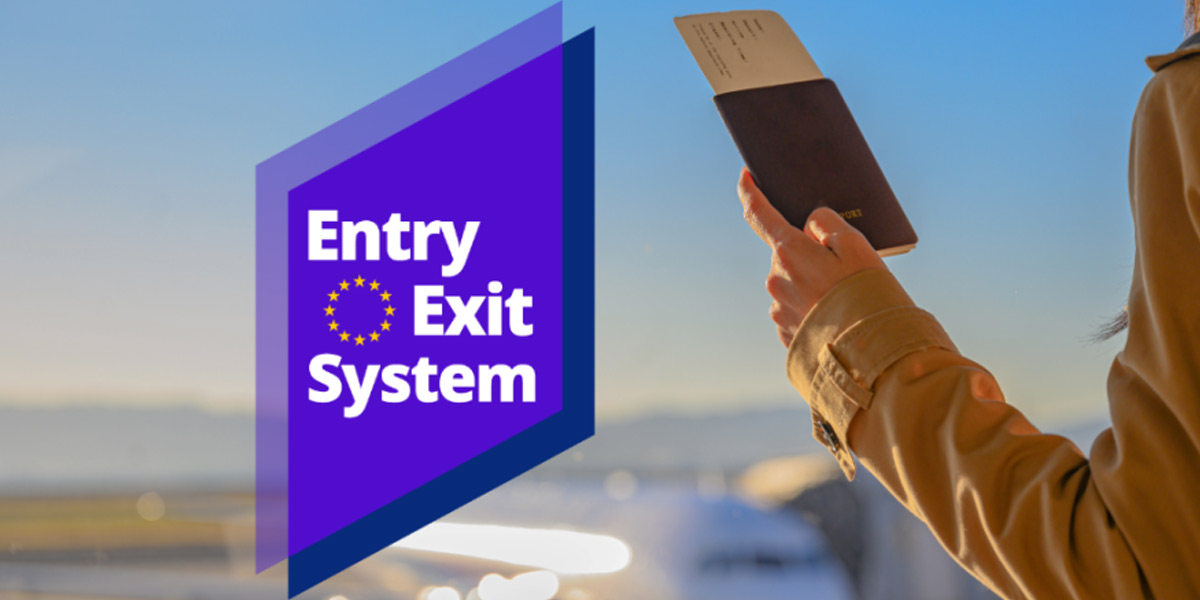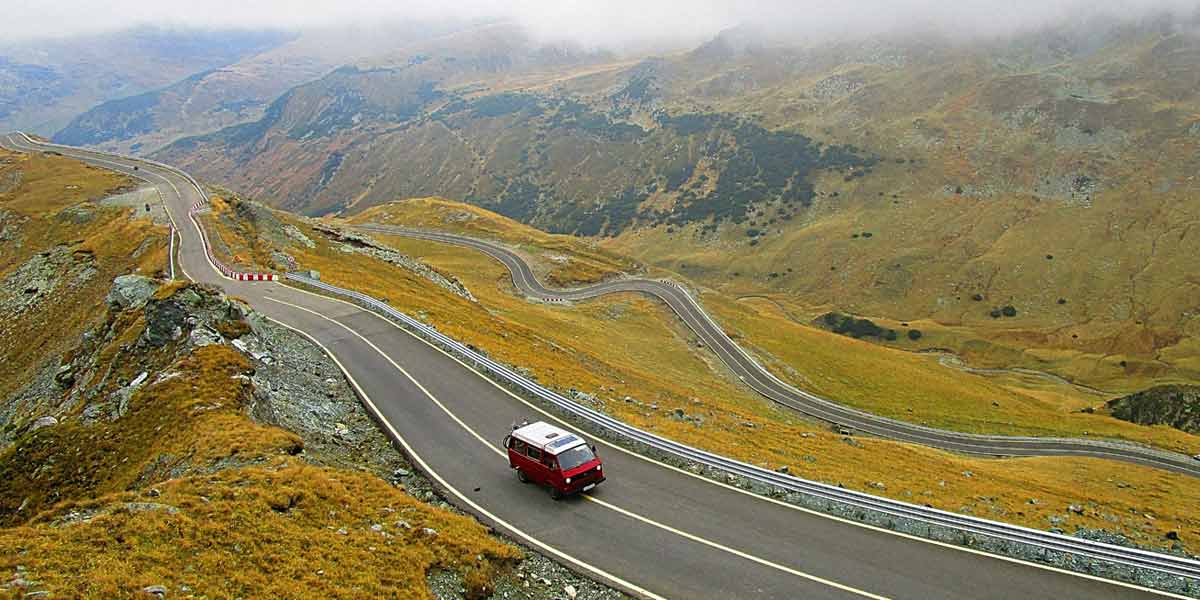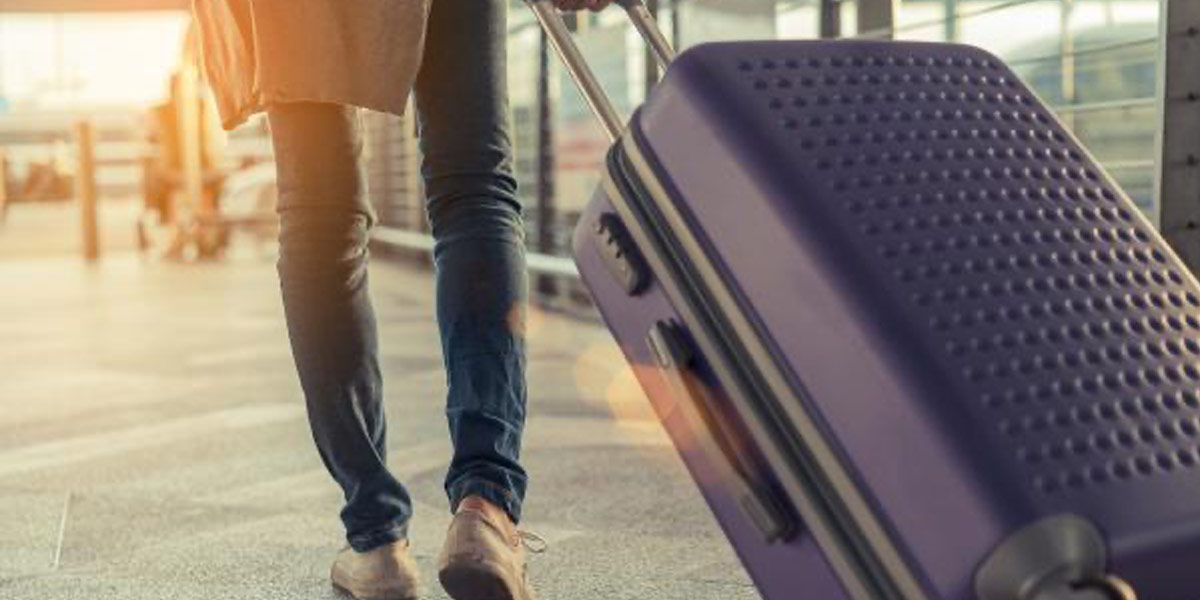The European Union (EU) are implementing a new Entry/Exit System, which comes into effect on 12 October 2025 and will impact anyone entering the EU for the first time since the Entry/Exit System (EES) came into effect.
From 12 October 2025, anyone arriving at a border crossing to enter the EU will pass through one of the new EES points, and will need to provide a limited amount of personal data in order to be allowed through the border crossing.
This data will only need to be provided the first time you arrive at a border crossing after the EES has come into effect. Any subsequent crossings into or out of the EU will only require that this information is verified, to confirm your identity.
Jump to:

A Quick Summary of the EES
In brief, the EES is an automated IT system for registering the movement of non-EU nationals across the external borders of EU countries.
This includes British citizens, which will affect anyone travelling from the UK into France, Spain, Netherlands, etc. in their campervan.
Once the EES comes into effect on 12 October 2025, the following will take place:
- The first time you arrive at an external border crossing of an EU country, you’ll need to register your fingerprints or a photo of your face with the Entry/Exit System.
- Any subsequent times that you arrive at an external border crossing of an EU country, you’ll need to verify the data already stored in the EES.
In other words, from 12 October 2025, the first time you enter an EU country from outside the EU, or cross from an EU country to a country outside of the EU, you’ll need to register your fingerprints or a photograph of your face with the new system.
After that first time, you’ll only need to verify that information, rather than having it recorded again.

Which Countries are Using the Entry/Exit System?
The Entry/Exit System, or EES, is an IT system designed to register non-EU nationals each time they cross the external borders of the following European countries:
| Austria | Greece | Norway |
| Belgium | Hungary | Poland |
| Bulgaria | Iceland | Portugal |
| Croatia | Italy | Romania |
| Czechia | Latvia | Slovakia |
| Denmark | Liechtenstein | Slovenia |
| Estonia | Lithuania | Spain |
| Finland | Luxembourg | Sweden |
| France | Malta | Switzerland |
| Germany | Netherlands |
The EES is only in effect at these countries’ external borders, which means that you would need to pass through an EES point if travelling from the UK to France, for example, but not if you were travelling from France to Belgium.
It’s possible that this list of participating countries may change, so we recommend checking the official Travel to Europe website for the very latest information.

Do I Need to be Registered in the EES?
If you’re a British citizen then you’ll need to register your information with the EES.
This is because the system applies to everyone who is a non-EU national, whether or not you need a visa to travel to the European countries using the EES.
How Does the EES Work?
The EES is an automated IT system, which adds an extra layer of checks when crossing the external borders of over 25 EU countries for a short stay.
The EES will collect your travel document data and other personal data, including your entry and exit dates. This information will then be stored electronically, and the procedure will facilitate your border crossing.
If you overstay the period allowed in the European countries using the EES, or if the authorities refuse you entry, the system will identify you and record this information.

The First Time You Arrive at a Border Crossing After EES
You’ll need to provide a limited amount of personal data the first time you arrive at a border crossing since the EES came into effect. Passport control officers will either scan your fingerprints or take a photo of your face, and this data will then be recorded in digitally.
You can speed this process up by pre-registering some of your data in advance by using the self-service equipment, if it’s available at the border crossing point which you arrive at.
There’s also a Travel to Europe mobile application in the works, which will allow you to enter some information before you arrive at a border crossing, although this isn’t available at all border crossings at the time of writing.
We will make more information about the mobile app available as it’s rolled out, including where to download it, how to use it, and which countries have adopted it for use.
If You’ve Passed Through Border Crossings Since EES
If you’ve passed through an EES point one or more times since the new system came into effect on 12 October 2025, then you won’t need to supply your fingerprints or photo, and will only need to have them verified.
This will be a much faster process, and can be made even faster by using one of the self-service points if you hold a biometric passport. The self-service system may not be available at every border crossing, however.
Important Note: Please be aware that all the other conditions for entry or exit remain valid and passport control officers may, at any time, take measures as necessary, such as collecting again the image of your face, etc.

What’s a Non-EU National?
Non-EU nationals, for the purpose of the EES, are any travellers who’s nationality is not that of a European Union country, or of Iceland, Liechtenstein, Norway, or Switzerland.
This then applies to anyone who’s nationality is British, meaning that British citizens will need to register their information with the EES to enter European countries which use the EES after 12 October 2025.
What’s a Short Stay?
In this context, a ‘Short stay’ means up to 90 days within any 180-day period. This period is calculated as a single period for all the European countries using the EES.
There is a short stay calculator available online, to help you ensure that you’re not staying in EU countries longer than you’re allowed to.
It’s also worth remembering that a lot of our campervan and motorhome insurance policies come with 90 days of EU driving cover included, and while this can be extended, it’s another good reason to ensure you don’t stay longer than 90 unless you’re permitted to!

Is Anyone Exempt from the EES?
The EES will apply to the vast majority of non-EU nationals who enter or leave the countries which are using the EES, with the following exceptions.
- Nationals of the European countries using the EES, as well as Cyprus and Ireland
- Non-EU nationals who hold a residence card and are immediately related to an EU national
- Non-EU nationals who hold a residence card or a residence permit and are immediately related to a non-EU national who can travel throughout Europe like an EU citizen
- Non-EU nationals travelling to Europe as part of an intra-corporate transfer or for the purposes of research, studies, training, voluntary service, pupil exchange schemes or educational projects and au-pairing
- Holders of residence permits and long-stay visas
- Nationals of Andorra, Monaco and San Marino and holders of a passport issued by the Vatican City State or the Holy See
- People exempt from border checks or who have been granted certain privileges with respect to border checks (such as heads of state, accredited diplomats, cross-border workers, etc.). Diplomats travelling on short stay may be exempt from EES registration under certain conditions.
There are other exemptions as well, which are detailed on the Travel to Europe website.

Save Big With Just Kampers!
Looking for some quality parts and accessories for your campervan? Insure your vehicle with Just Kampers Insurance and you’ll get 10% off orders at Just Kampers!
